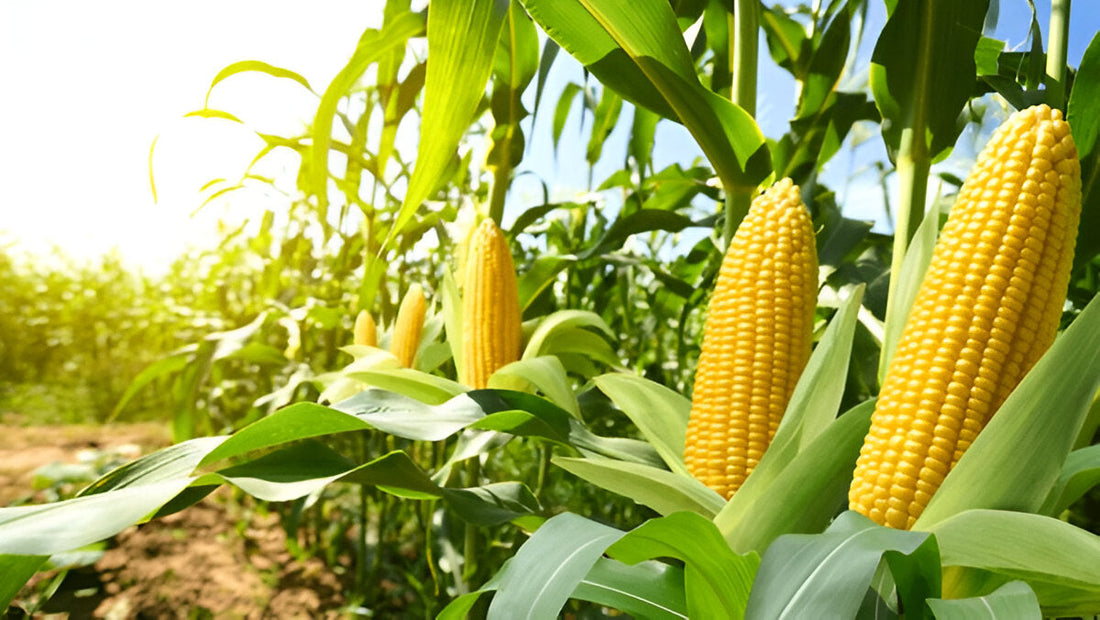
Grow Corn in Pakistan – Moji Mall Guide
Share
Growing sweet corn (مکئی) at home is easier than it looks — and the fresh, juicy harvest is worth every bit of care. Corn grows well in Pakistan’s warm climate, especially when sown at the right time and given enough space, water, and sunlight. Here’s a simple guide to growing makai successfully at home.
| Aspect | Details |
|---|---|
| Best Sowing Time | February to April |
| Ideal Temperature | 22°C to 30°C |
| Germination Time | 7–10 days |
| Transplant Time | Direct sowing (no transplanting needed) |
| Spacing | 8–10 inches between plants |
| Harvest Time | 75–90 days after sowing |
Step 1: Sow Seeds 🌱
When to Sow:
- Sow seeds from February to April, when warm weather is consistent.
- Ideal soil temperature is 22°C to 30°C.
- Avoid sowing in cold or overly wet soil.
How to Sow: Direct sow seeds 1–1.5 inches deep in well-drained, fertile soil. Sow in short rows or blocks instead of single lines to improve pollination.
Germination Tips: Seeds usually germinate in 7–10 days. Keep the soil moist during this stage for better sprouting.
Step 2: Thin Seedlings 🌿
When to Thin: Once seedlings are 4–6 inches tall, thin them to leave 8–10 inches between plants.
Why Thin: Proper spacing helps each corn plant grow tall and produce full-sized cobs without competition.
Aftercare: Water gently after thinning and mulch around the base to retain moisture.
Step 3: Care for Plants 🌞💧
Sunlight Needs: Corn needs 6–8 hours of full sunlight daily for strong stalks and good cob formation.
Watering: Water deeply 2–3 times a week, especially during flowering and cob formation. Keep the soil moist, not soggy.
Feeding Schedule: Mix compost into the soil before planting. Feed with NPK 20-20-20 fertilizer every 15 days until tassels appear, then switch to NPK 5-15-45 to support cob filling.
Step 4: Protect Plants 🐛
Common Pests: Look for corn borers, aphids, and armyworms, especially during cob formation.
Natural Protection: Spray neem oil every 10–12 days (1 teaspoon neem oil + 1 liter water + few drops soap), especially around developing ears.
Common Problems:
- Small or missing kernels: Caused by poor pollination — plant in blocks or hand-pollinate if needed.
- Yellowing Leaves: Often due to nitrogen deficiency — feed with compost or balanced fertilizer.
- Bent Stalks: Can be from shallow roots — mound soil around the base for support.
Step 5: Harvest Cobs 🌽
When to Harvest: Corn is ready 75–90 days after sowing, when silks turn brown and dry, and kernels feel full and milky when pressed.
How to Harvest: Twist the cob downward and pull to detach it from the stalk. Harvest early in the morning for best sweetness.
Bonus Tip: Don’t delay — corn tastes best when harvested at its peak and cooked fresh.
FAQs
Can I grow sweet corn in pots?
Yes, but use very large pots (18–20 inches deep and wide) and grow only 1 plant per pot.
Why are my corn plants tall but no cobs?
Usually due to poor pollination or excessive nitrogen. Ensure proper spacing and balanced feeding.
How do I hand-pollinate corn?
Gently shake the tassels (top part) so pollen falls onto the silks (hairy part) of the ears below.
How many cobs does one corn plant produce?
Typically 1–2 cobs per plant under good growing conditions.
Why are my corn cobs small or empty?
Likely caused by poor pollination or irregular watering during cob development.
Growing corn at home is satisfying and surprisingly simple with good spacing, warm sunlight, and regular watering. With a little attention, you’ll enjoy sweet, juicy makai cobs that taste far better than store-bought ones.

